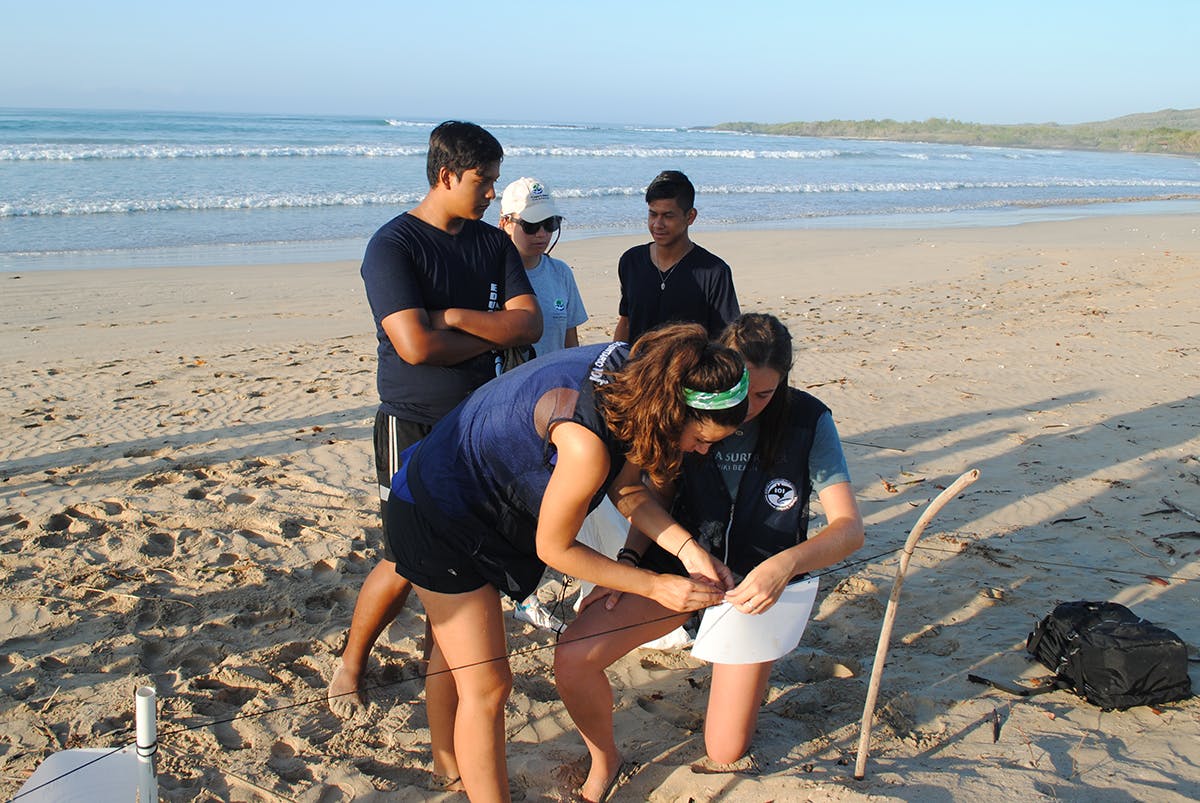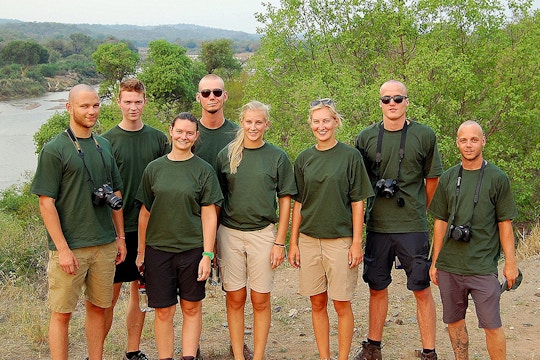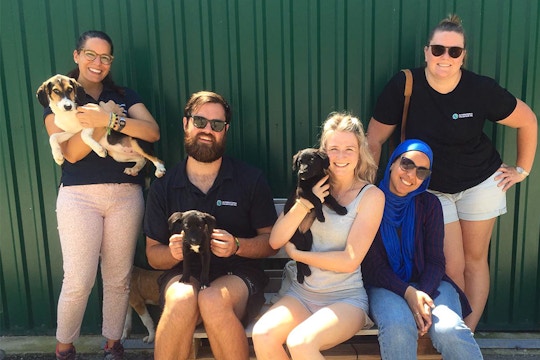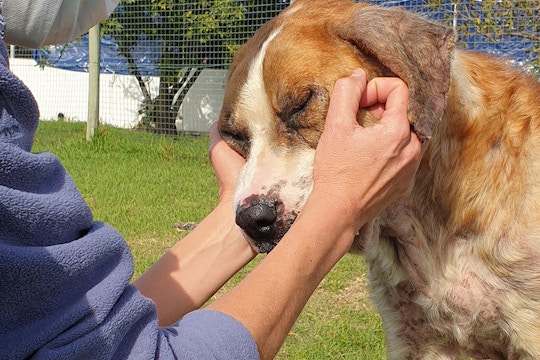
Sea Turtle Nest Monitoring Volunteering in the Galapagos Islands
Want to help protect highly endangered turtle species in the beautiful Galapagos Islands? International Volunteer HQ’s Sea Turtle Nest Monitoring project is a once-in-a-lifetime opportunity to support the protection of sea turtles in the Galapagos Islands. You’ll be part of the conservation effort on Isabela Island by collecting data, patrolling beaches, monitoring nests, and much more! This project is only available during the nesting season from January to the end of May.
Highlights:
- Programs start every Monday
- Affordable fees from CA$2001 for 2 weeks
- Includes accommodation, orientation and 24/7 support
-
Help conserve critically endangered turtles during nesting season
-
Discover nature and wildlife that cannot be found anywhere else on Earth
-
Stay in a local homestay or volunteer house in Puerto Villamil
Key information
This program is ideal for:
What to expect and how you'll make an impact
The Green Sea Turtle (species name Chelonia mydas) which nests on Galapagos Islands can be found swimming throughout the tropical and subtropical waters, and with their numbers declining the continued efforts to protect these turtles is an important focus for conservationists in the Galapagos.
As a sea turtle nest monitoring volunteer, the data that you collect will assist the local team in collecting important baseline nesting data that the Galapagos National Park will analyze and apply in the management plan of their beaches. This will allow Galapagos National Park to continue the protection and management of these sea turtles that are in a critical state of conservation at a global level.
This project is only available during the nesting season from January to the end of May. Your specific tasks will depend on the time of the year you volunteer as well as the needs of the project. This project has a minimum duration requirement of 2 weeks. Please note, you should not expect to have any direct physical contact with turtles on this project.
Volunteer work duties may vary but generally include:
- Clearing and preparing of nesting area along the beach
- Beach patrols looking for nests and signs of sea turtles
- Monitoring of already registered nests
- Baseline data collection on nests, nest sizes, and beach conditions
- Documenting nesting patterns observed and help determine hatching success when nest excavation occurs
- Practice of conversational English with the guides of the reserve
- As you walk the beach, picking up rubbish and debris to keep the beach clear for the turtles
- Removal of Kikuyo (a highly invasive plant that chokes out nature plants) from the turtle nesting area (3 hours per week)
- Assist with monthly beach profiling to measure beach erosion to determine the current beach profile
Please note, while the Green Sea Turtle is the only turtle species that nests on Isabela Island, in your spare time if you choose to go snorkeling, you may see additional species of turtle such as Hawksbill. But this species does not nest on Isabela Island.
Why do Sea Turtle Nest Monitoring volunteering in the Galapagos Islands with IVHQ?
As a Turtle Conservation volunteer in Galapagos, you’ll be adding value to the local community, while also developing personally and professionally by:
- Helping protect critically endangered turtle species
- Supporting scientists with data collection and monitoring
- Practicing your Spanish and communication skills
- Gaining wildlife and marine conservation experience
- Immersing yourself fully in the local culture
- Discovering the natural wonders of the Galapagos Islands
Volunteer requirements
Volunteers need to be 18 years or over to participate on this project independently. Volunteers under the age of 18 must be accompanied by a parent or guardian to participate in this program and will be required to provide IVHQ with a parental/guardian consent form and two character reference letters in order to participate on the program, and may be asked to provide additional documentation to the local team.
Volunteers need to be able to walk up to 4 miles on the beach in the early morning and late evening.
All volunteers are required to have adequate volunteer travel insurance and provide a recent criminal background check to IVHQ.
Are you eligible to volunteer?
Submit a free application so we can confirm your eligibility and check availability for your preferred dates.
Apply For FreeNot sure which program to join?
Galapagos Islands photo gallery






















Academic course credit
Gain course credit from your college or university and meet your academic requirements when completing a volunteer abroad program with International Volunteer HQ!
Learn about course credit
Location
The IVHQ Galapagos volunteer program is based in Puerto Villamil, a small port village located on the southeastern edge of Isabela Island in the Galapagos Islands. This is where orientation and general administration is carried out by our local team. Volunteer placements are located within walking distance around Puerto Villamil with the exception of the Sustainable Agriculture project, which is a 30 minute bus ride outside the village to the highlands.
Arrival and orientation
The Galapagos volunteer program begins every Monday and you need to arrive on Isabela Island on your Monday chosen start date.
After you have registered for the program, please book your travel into Seymour Galapagos Ecological Airport (GPS) on Baltra Island. From here you can either catch a ferry boat to Isabela Island (this ferry trip is included in your program fee) or take an island hopper plane from Baltra Island to Isabela Island with EMETEBE airlines (this flight is not included in your program fee).
Most volunteers arrive in mainland Ecuador on Sunday and spend this night in either Quito or Guayaquil. On Monday they then travel from mainland to Baltra Island, and then onward to Isabela Island. When you arrive on Isabela Island you will need to walk a few minutes up from the pier to the ABG (Biosecurity Agency) office where you will be met by a member of the local team who will transfer you to your accommodation (also included in your program fee) and then have a small town tour. Your accommodation is covered by your Program Fee and begins from your Monday arrival through the morning of your last Sunday.
On Tuesday, orientation is hosted by our local team in Galapagos and runs for half a day, after which you will be taken to your placement. Orientation covers everything you need to know for your volunteer program in Galapagos – Introduction to Galapagos, Galapagos Customs, Rules and Expectations, Safety, Travel Opportunities in Galapagos, Introduction to your Project and Placement. The orientation will also give you a chance to meet other volunteers and swap contact details for weekend travel and socializing.
Volunteer schedule example
Weekdays
A volunteer day is subject to change depending on your specific placement and the current needs of your project. Volunteers on the Turtle Nest Monitoring project can expect to work for 4 hours a day. A typical daily schedule might be as follows:
| 6:00 - 8:00 AM | Volunteer work commences at first light. |
| 8:00 AM - 8:00 PM | Volunteers have the whole day free to relax, rest, eat, explore the island, do some local snorkeling, or take a surf lesson. |
| 8:00 PM - 1:00 AM | Volunteer work commences again for a couple of hours when it gets dark. |
Weekends
During the weekends, volunteers have spare time and usually just relax or take the opportunity to explore other parts of Isabela Island and other Galapagos islands such as the nearby Santa Cruz.
There is a dive site with great diving from Isabela, hike active Volcano Sierra Negra, snorkel site Tuneles and see the lava tunnels, visit islet Tintoreras, snorkel local dive spot Concha de Perla with turtles, seals, rays, etc., kayak the bay, rent a bike and visit the ‘Wall of Tears’ along the stunning coastal route passing lagoons, mangroves, and giant tortoises in the wild.
Accommodation and WiFi
Most volunteers will be accommodated in a homestay with a local family, but there is also the option of a small volunteer house. Volunteers can expect to share a twin room with one other volunteer or have their own private room; each bedroom has its own bathroom. In the volunteer house there is a cleaner that comes a couple of times every week, but volunteers need to be responsible for keeping the shared house and communal spaces clean and tidy.
Once registered if volunteers would like to be accommodated in the volunteer house please let your Program Manager know as this is subject to availability.
Isabela Island is very remote and it is important that volunteers are aware that internet reception is very spotty. There is WiFi in the office and in a few restaurants/cafes in town. Visitors cannot purchase a SIM card in Galapagos, only residents. Volunteers can purchase a SIM card on the mainland before traveling to the island, or use an international phone plan that covers them abroad. The Internet is too poor to expect to watch Netflix or have video calls while on the island.
Meals
The meals provided vary depending on the accommodation type you are placed in. Volunteers in a homestay are provided with three meals per day (breakfast, lunch, and dinner). Breakfast and dinner are provided at the homestay and volunteers can expect fresh fruit, fried eggs, bread and cooked green plantains. Lunch is provided at local associated restaurants and volunteers will have a variety of menu items to choose from. Lunch and dinner meals will include protein (meat, fish), rice and some veggies (varied depending on the season) and meals often start with a soup and include a natural drink.
For those who choose to stay in the volunteer house, breakfast is not included so volunteers are responsible for providing their own breakfast and can do this using the fully equipped kitchen. Both lunch and dinner is provided at local associated restaurants and volunteers will have a variety of menu items to choose from. Lunch and dinner meals will include protein (meat, fish), rice and some veggies (varied depending on the season) and meals often start with a soup and include a natural drink.
There is filtered water available in the local teams office, volunteer house and in homestays and volunteers are requested to bring a reusable water bottle with them.
If you have any special dietary requirements, please let us know so we can make arrangements for you. However, we need to stress the point that you should not expect to eat as you normally do at home. We will do our best to see that you are well taken care of, but as a volunteer, there is a need to be flexible.
If you have any special dietary requirements, please make a note on your application so arrangements can be made. However, it is important that volunteers should not expect to eat as they normally do at home.











Pricing
Duration |
Program FeeDue 30 days before you start, or within 48 hours if you register inside of 30 days. Covers the cost of hosting you.
|
|---|---|
| 2 weeks | CA$2001 Equivalent to CA$143/day |
| 3 weeks | CA$2734 Equivalent to CA$130/day |
| 4 weeks | CA$3467 Equivalent to CA$124/day |
| 5 weeks | CA$4200 Equivalent to CA$120/day |
| 6 weeks | CA$4933 Equivalent to CA$117/day |
| 8 weeks | CA$6399 Equivalent to CA$114/day |
| 10 weeks | CA$7865 Equivalent to CA$112/day |
| 12 weeks | CA$9331 Equivalent to CA$111/day |
- Accommodation
- 24/7 in-country support
- In-country program orientation
- Pre-departure support from your Program Manager
- Personalized preparation tools, guides and check lists
- Access to IVHQ’s preferred insurance and flights partners
- Certificate of International Volunteer Service
Learn more about what's included in your IVHQ Registration Fee and Program Fee.
- All programs attract a Registration Fee of US$329 (approximately CA$463) in addition to the Program Fee. This covers all pre-departure support services. IVHQ fees are priced in USD but you may elect to pay in CAD.
- A 5% international banking fee is added at point of payment.
- Additional things to budget for include: national park entry fees, flights, travel insurance (mandatory), vaccinations, criminal background check, spending money, public transportation and return to the airport when your program finishes.
- Program Fees for the Galapagos Islands program are non-refundable once inside 30 days of the program start date. Any changes or cancellations within 30 days of the program start date are subject to a US$500 late change/cancellation fee.
Check what's required to visit the Galapagos Islands
Check out the widget below to find out what the Covid-19 restrictions and visa requirements are for Galapagos Islands, based on your country of residence.

Safety and support
IVHQ follows best practice and industry-leading health and safety procedures, which are regularly reviewed and optimized as part of the B Corporation recertification.
- All volunteers encouraged to complete our interactive pre-departure training.
- All local teams trained on best practice volunteer management & First Aid.
- All IVHQ programs are required to adhere to IVHQ's Risk Management Policy.
- All volunteers have access to 24/7 in-country support from our local team.
Essential country information
| Capital | Puerto Baquerizo Moreno on San Cristóbal |
| Population | 2,500 on Isabela Island and 33,042 across the Galapagos Islands |
| Languages | Spanish |
| Currency | US Dollar (USD) |
| Time zone | UTC-06:00 |
Weather and climate: Galapagos can be divided into three Climatic regions. The Pannonian Plains in the north have a continental climate of cold winters and hot summers, the mountainous Dinara Region in Central Galapagos has an alpine climate and the Adriatic coast, where our volunteer program is based, enjoys a Mediterranean climate of cool, rainy winters and hot, dry summers.
Latest blog posts
Other projects you may be interested in










































